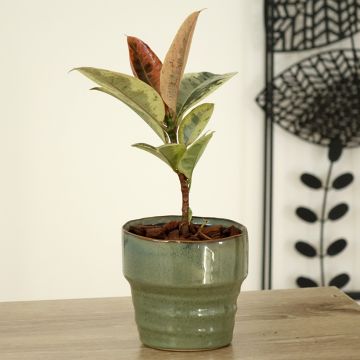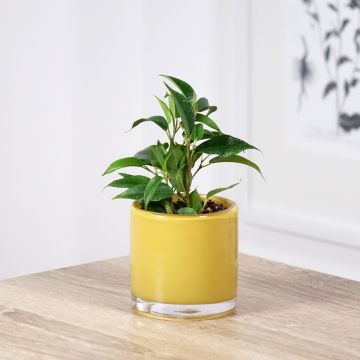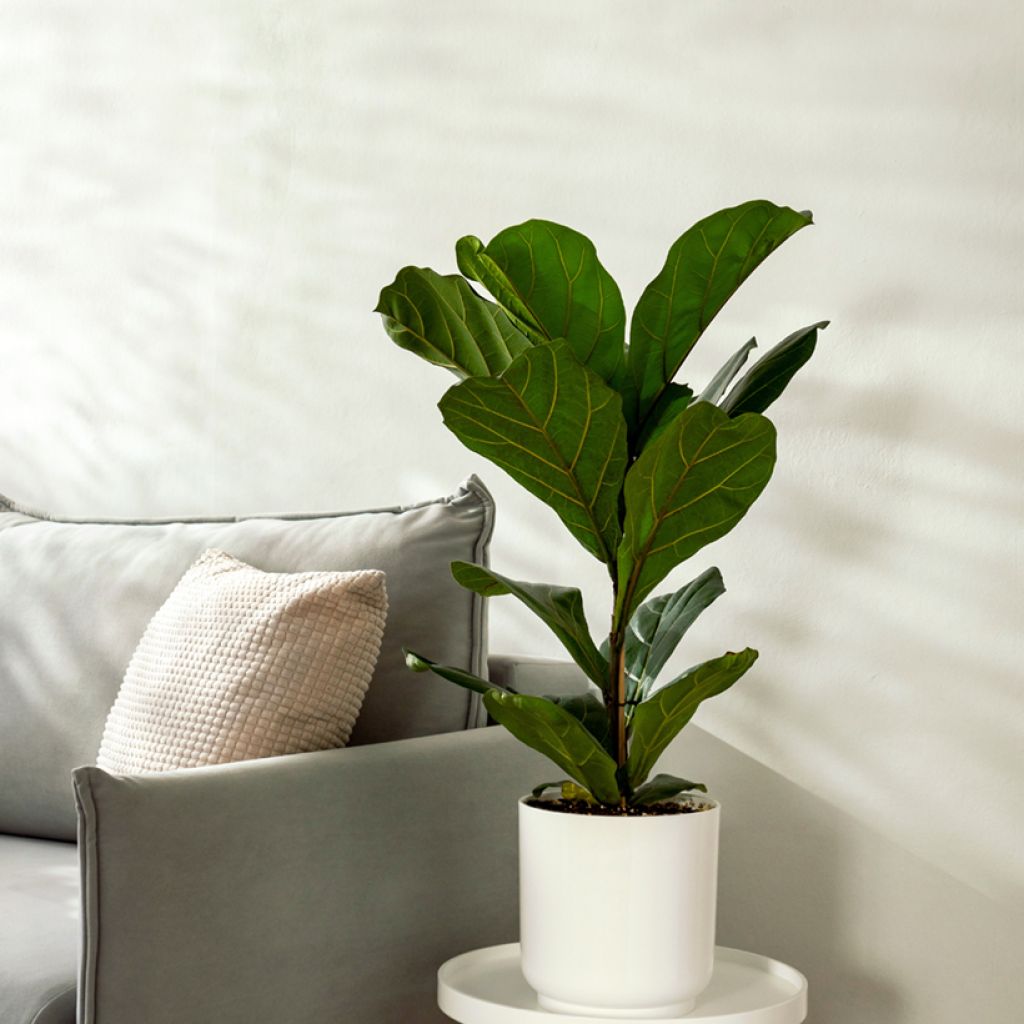

Ficus lyrata - Fiddle-leaf fig
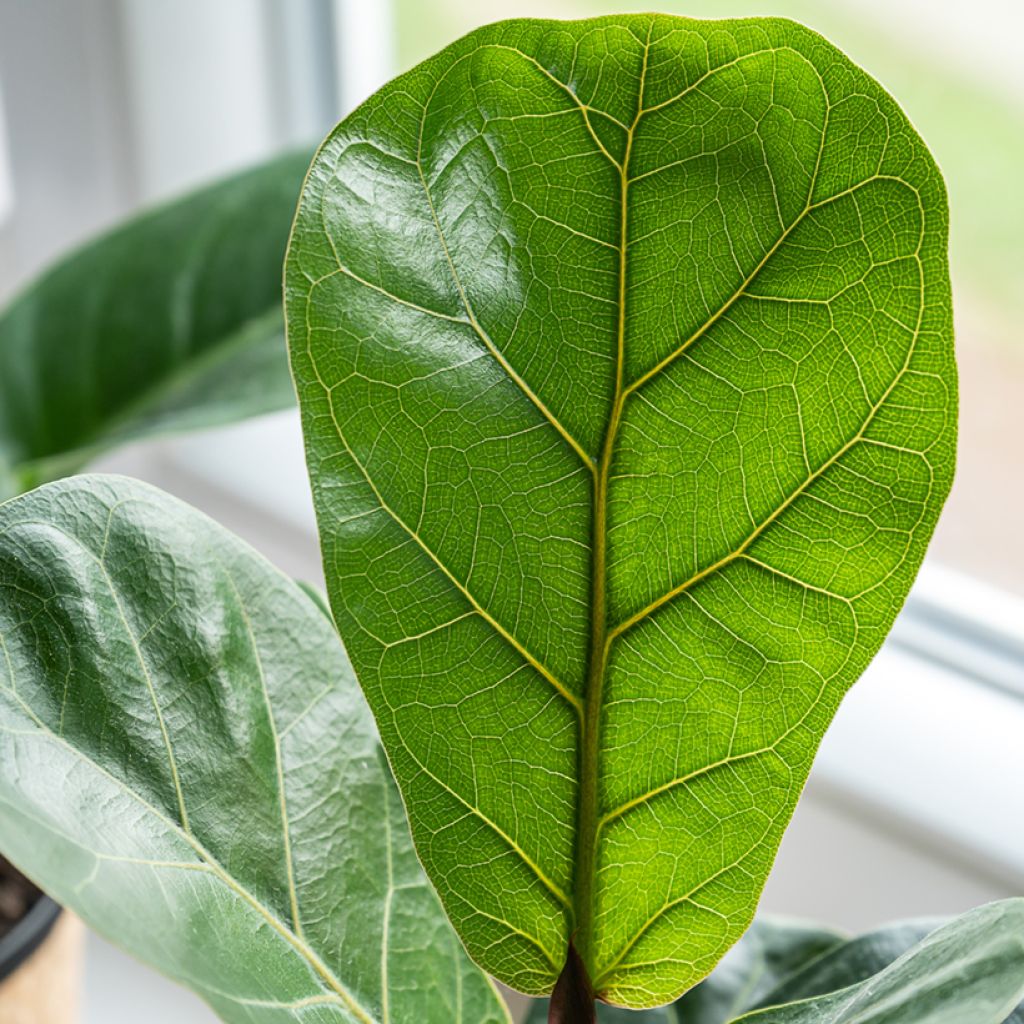

Ficus lyrata - Fiddle-leaf fig
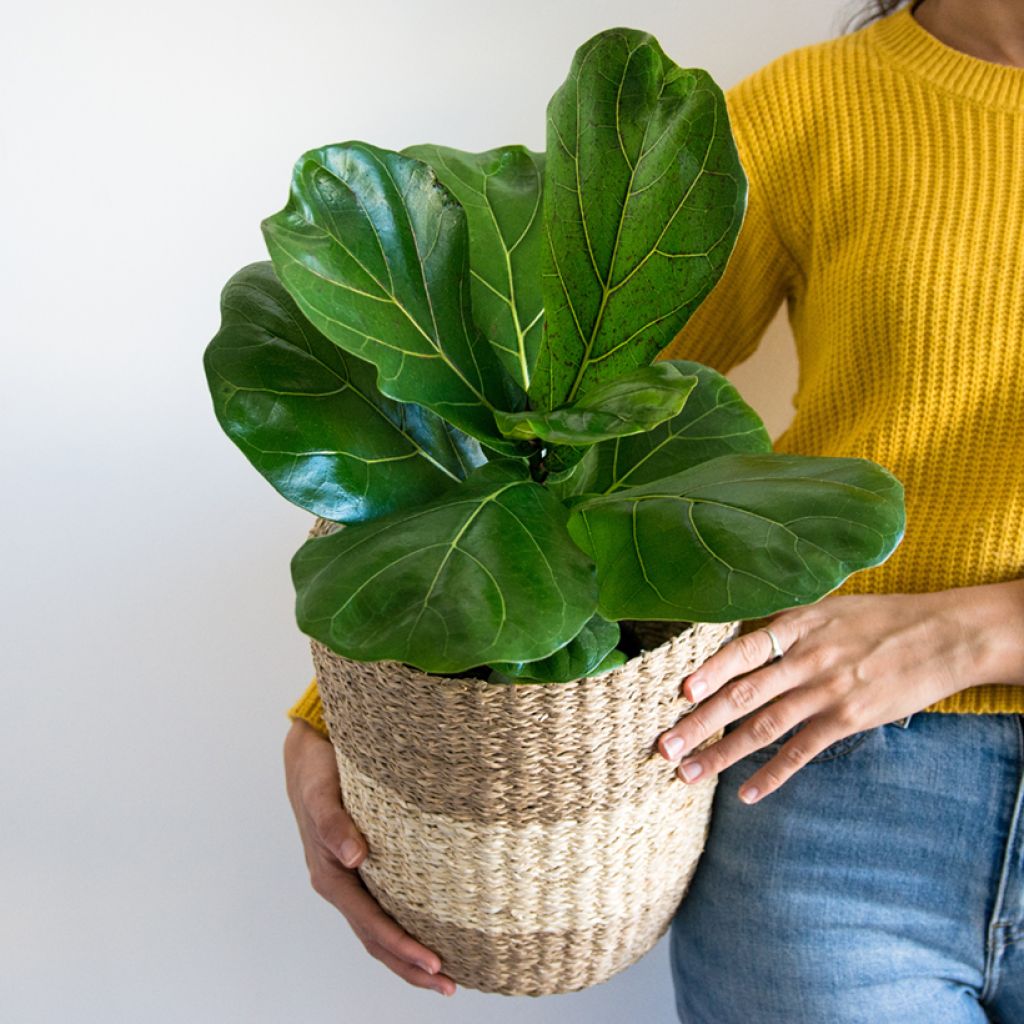

Ficus lyrata - Fiddle-leaf fig
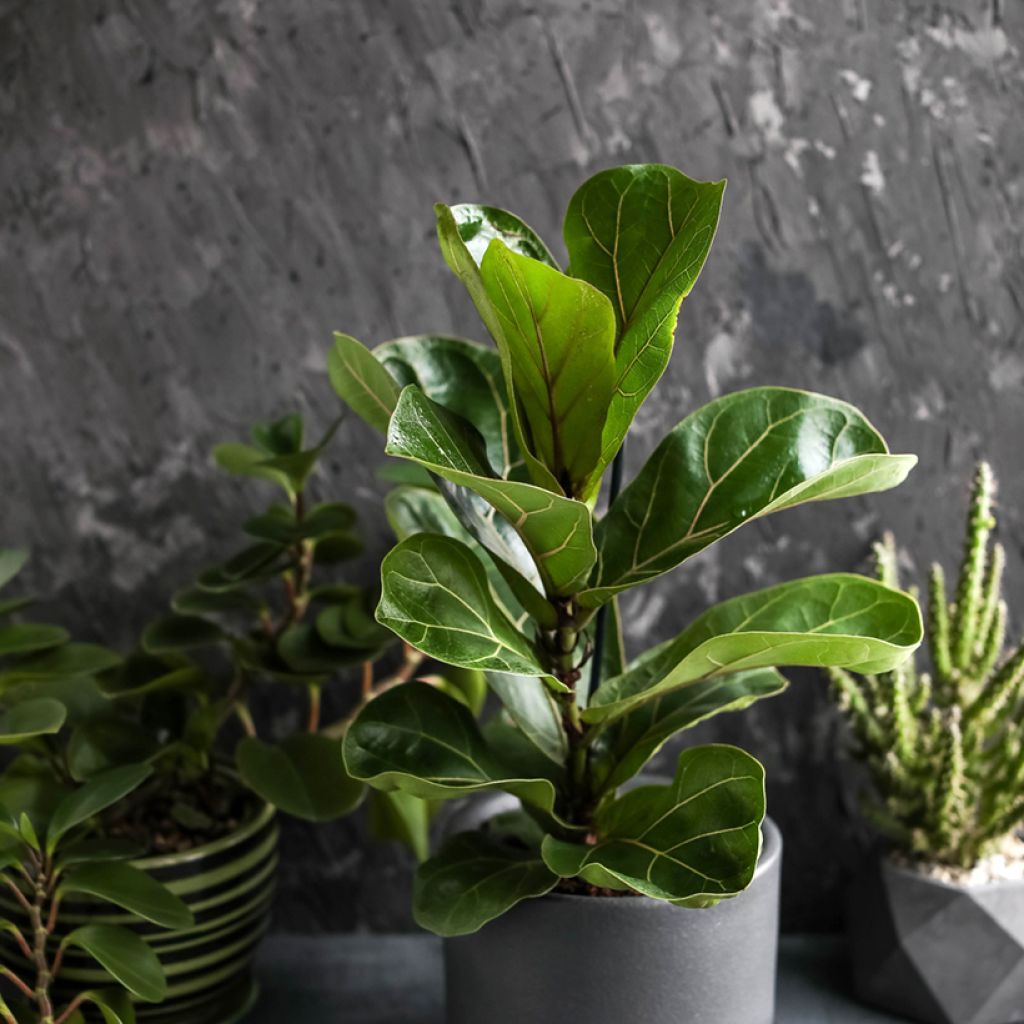

Ficus lyrata - Fiddle-leaf fig
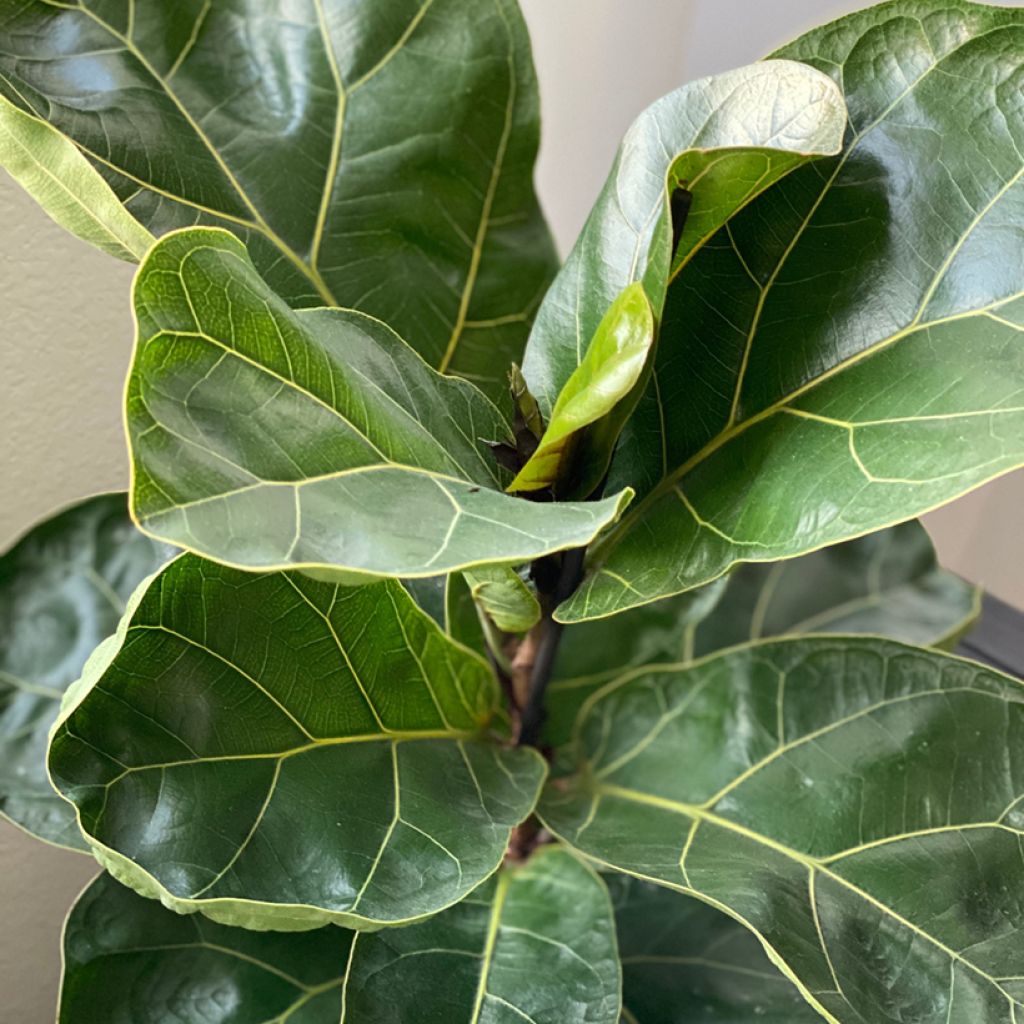

Ficus lyrata - Fiddle-leaf fig
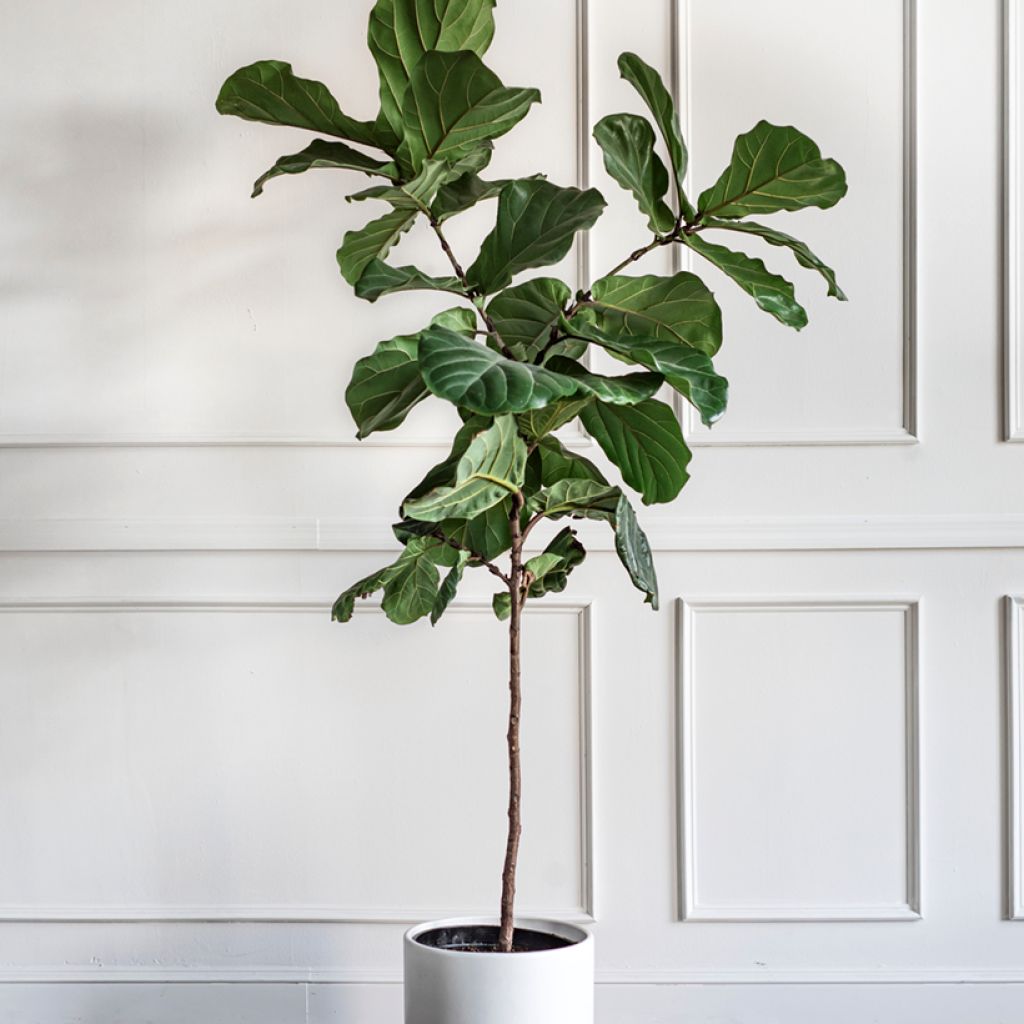

Ficus lyrata - Fiddle-leaf fig
Ficus lyrata - Fiddle-leaf fig
Ficus lyrata
Fiddle-leaf fig, banjo fig
Why not try an alternative variety in stock?
View all →This plant carries a 30 days recovery warranty
More information
We guarantee the quality of our plants for a full growing cycle, and will replace at our expense any plant that fails to recover under normal climatic and planting conditions.
Description
The Ficus lyrata, commonly known as the fiddle-leaf fig or lyre-leaf fig, is an uncommon houseplant prized for its imposing foliage and slender silhouette. With its large lyre-shaped, deep green, and glossy leaves, this ficus fits perfectly into various decorative styles. It will find its place equally well in a contemporary setting as in a bohemian interior or an urban jungle décor. Its generous botanical presence will look superb in a spacious living room or a bright conservatory, or even in an elegant office.
Belonging to the Moraceae family, the Ficus lyrata is a botanical species native to the humid tropical forests of West Africa, particularly Cameroon and Sierra Leone. In its natural habitat, it can reach up to 15 m in height, but indoors and in pots, it generally grows to around 3 m with an average spread of 1.30 m. The leaves are spectacular. They often measure between 20 and 30 cm in length, with a width of up to 15 cm. Their shape resembles that of a lyre or violin, with a narrow base widening towards the tip. Their texture is leathery, and their surface has a natural, deep green sheen, with prominent veins that enhance their aesthetic appeal. The often single trunk is sturdy and may develop branching over time. The genus Ficus includes many species valued for their decorative foliage and adaptability to indoor conditions. These plants prefer indirect light, moderate humidity, and well-drained soil to thrive.
Warming - It is important to note that the sap of the Ficus lyrata is toxic. This white, milky sap can cause skin irritation upon contact, particularly in those with sensitive skin or open wounds. Furthermore, ingestion of the leaves or sap by pets or children may lead to symptoms such as nausea, vomiting, or oral irritation. It is therefore advisable to handle this plant with care, wearing gloves during pruning or repotting, and to keep it out of reach of children and pets.
The fiddle-leaf fig is notable for its imposing botanical presence, making it ideal for a spacious living room or bright conservatory. Its slender silhouette and dense foliage complement contemporary, minimalist, or even bohemian décors, where it can serve as a centrepiece. To showcase it best, place it near a window providing abundant indirect light, avoiding direct sunlight which may scorch its leaves. Pair it with plants sharing similar needs, such as the Monstera deliciosa or the Philodendron bipinnatifidum, to create a lush and harmonious atmosphere. These combinations enhance the jungle effect while bringing a diversity of shapes and textures to your interior.
Report an error about the product description
Ficus lyrata - Fiddle-leaf fig in pictures


Foliage
Plant habit
Botanical data
Ficus
lyrata
Moraceae
Fiddle-leaf fig, banjo fig
West Africa
Safety measures
Other Ficus - Indoor plant fig
View all →Location
Location
Maintenance and care
Potting advice, substrates and fertilisers
Houseplant care
Disease and pest advice
Maintenance and care
This item has not been reviewed yet - be the first to leave a review about it.
Haven't found what you were looking for?
Hardiness is the lowest winter temperature a plant can endure without suffering serious damage or even dying. However, hardiness is affected by location (a sheltered area, such as a patio), protection (winter cover) and soil type (hardiness is improved by well-drained soil).

Photo Sharing Terms & Conditions
In order to encourage gardeners to interact and share their experiences, Promesse de fleurs offers various media enabling content to be uploaded onto its Site - in particular via the ‘Photo sharing’ module.
The User agrees to refrain from:
- Posting any content that is illegal, prejudicial, insulting, racist, inciteful to hatred, revisionist, contrary to public decency, that infringes on privacy or on the privacy rights of third parties, in particular the publicity rights of persons and goods, intellectual property rights, or the right to privacy.
- Submitting content on behalf of a third party;
- Impersonate the identity of a third party and/or publish any personal information about a third party;
In general, the User undertakes to refrain from any unethical behaviour.
All Content (in particular text, comments, files, images, photos, videos, creative works, etc.), which may be subject to property or intellectual property rights, image or other private rights, shall remain the property of the User, subject to the limited rights granted by the terms of the licence granted by Promesse de fleurs as stated below. Users are at liberty to publish or not to publish such Content on the Site, notably via the ‘Photo Sharing’ facility, and accept that this Content shall be made public and freely accessible, notably on the Internet.
Users further acknowledge, undertake to have ,and guarantee that they hold all necessary rights and permissions to publish such material on the Site, in particular with regard to the legislation in force pertaining to any privacy, property, intellectual property, image, or contractual rights, or rights of any other nature. By publishing such Content on the Site, Users acknowledge accepting full liability as publishers of the Content within the meaning of the law, and grant Promesse de fleurs, free of charge, an inclusive, worldwide licence for the said Content for the entire duration of its publication, including all reproduction, representation, up/downloading, displaying, performing, transmission, and storage rights.
Users also grant permission for their name to be linked to the Content and accept that this link may not always be made available.
By engaging in posting material, Users consent to their Content becoming automatically accessible on the Internet, in particular on other sites and/or blogs and/or web pages of the Promesse de fleurs site, including in particular social pages and the Promesse de fleurs catalogue.
Users may secure the removal of entrusted content free of charge by issuing a simple request via our contact form.
The flowering period indicated on our website applies to countries and regions located in USDA zone 8 (France, the United Kingdom, Ireland, the Netherlands, etc.)
It will vary according to where you live:
- In zones 9 to 10 (Italy, Spain, Greece, etc.), flowering will occur about 2 to 4 weeks earlier.
- In zones 6 to 7 (Germany, Poland, Slovenia, and lower mountainous regions), flowering will be delayed by 2 to 3 weeks.
- In zone 5 (Central Europe, Scandinavia), blooming will be delayed by 3 to 5 weeks.
In temperate climates, pruning of spring-flowering shrubs (forsythia, spireas, etc.) should be done just after flowering.
Pruning of summer-flowering shrubs (Indian Lilac, Perovskia, etc.) can be done in winter or spring.
In cold regions as well as with frost-sensitive plants, avoid pruning too early when severe frosts may still occur.
The planting period indicated on our website applies to countries and regions located in USDA zone 8 (France, United Kingdom, Ireland, Netherlands).
It will vary according to where you live:
- In Mediterranean zones (Marseille, Madrid, Milan, etc.), autumn and winter are the best planting periods.
- In continental zones (Strasbourg, Munich, Vienna, etc.), delay planting by 2 to 3 weeks in spring and bring it forward by 2 to 4 weeks in autumn.
- In mountainous regions (the Alps, Pyrenees, Carpathians, etc.), it is best to plant in late spring (May-June) or late summer (August-September).
The harvesting period indicated on our website applies to countries and regions in USDA zone 8 (France, England, Ireland, the Netherlands).
In colder areas (Scandinavia, Poland, Austria...) fruit and vegetable harvests are likely to be delayed by 3-4 weeks.
In warmer areas (Italy, Spain, Greece, etc.), harvesting will probably take place earlier, depending on weather conditions.
The sowing periods indicated on our website apply to countries and regions within USDA Zone 8 (France, UK, Ireland, Netherlands).
In colder areas (Scandinavia, Poland, Austria...), delay any outdoor sowing by 3-4 weeks, or sow under glass.
In warmer climes (Italy, Spain, Greece, etc.), bring outdoor sowing forward by a few weeks.




































